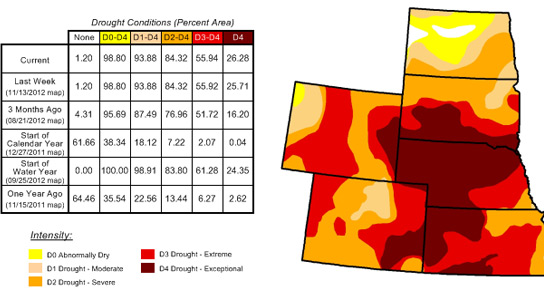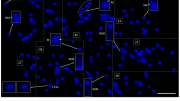
A persistent drought has raised fears of another Dust Bowl in the future. Credit: National Drought Mitigation Center
Rising temperatures, persistent drought, and depleted aquifers could set the stage for a second Dust Bowl, a period of drought and dust storms that affected the prairies in the USA and Canada during the 1930s.
The southern Great Plains have been ravaged, and a cool October broke a 16-month streak of higher-than-average temperatures across the Lower 48. However, temperatures are projected to remain above normal across most of the western half of the country in the following months and future temperature gains could be on the high side, according to various climate models.
As of November, 59.5% of the contiguous US was experiencing persistent drought conditions that are even more severe in the Great Plains in North and South Dakota, Nebraska, Kansas, Oklahoma, Texas, Montana, Wyoming, and Colorado. The drought is expected to persist in intensity for the foreseeable future. Large dust storms have been reported across some of the states.
Farmers are seeing major shifts in the places and times they can plant and what kind of crops will grow, as well as the pests and diseases that they are dealing with. There’s no question that some crops can be engineered to weather some of these conditions, but it’s still an open question whether they can adapt to all of them.
In the 1930s, land speculators and a government-encouraged frenzy of plowing removed windbreaks and grasslands that stabilized the soil. The dry, windy weather that followed created one of the worst man-made ecological disasters ever seen. Winds scoured bare soil and carried it across long distances.
This October’s dust storms could be the first of many, especially if the drought holds on for two or three more years. This could lead to Dust Bowl conditions forming in the farming belt. The crops would wither, streams dry, and other secondary effects would affect communities. Wind erosion is damaging and hard to control. Many of the practices that control wind erosion require growing plants, and that is impossible to put in place right now.
Since the 1940s, agriculture has relied on irrigation. Tens of thousands of wells are pumping from the 10-million-year-old Ogallala Aquifer, which has been depleted by 50%. Most of the remaining reservoirs will likely be useless for irrigation within the next 30 years. There has been less rain as well as hotter temperatures, which increase evaporation, causing farmers to use even more water.
There are some techniques, like dry-land farming, rotating crops, and using waste as biofuel that could keep the economy going. Other options would include switching to more heat-tolerant livestock or moving away from cattle altogether.









Be the first to comment on "Rising Temperatures & Persistent Drought Threaten to Create a Second Dust Bowl"